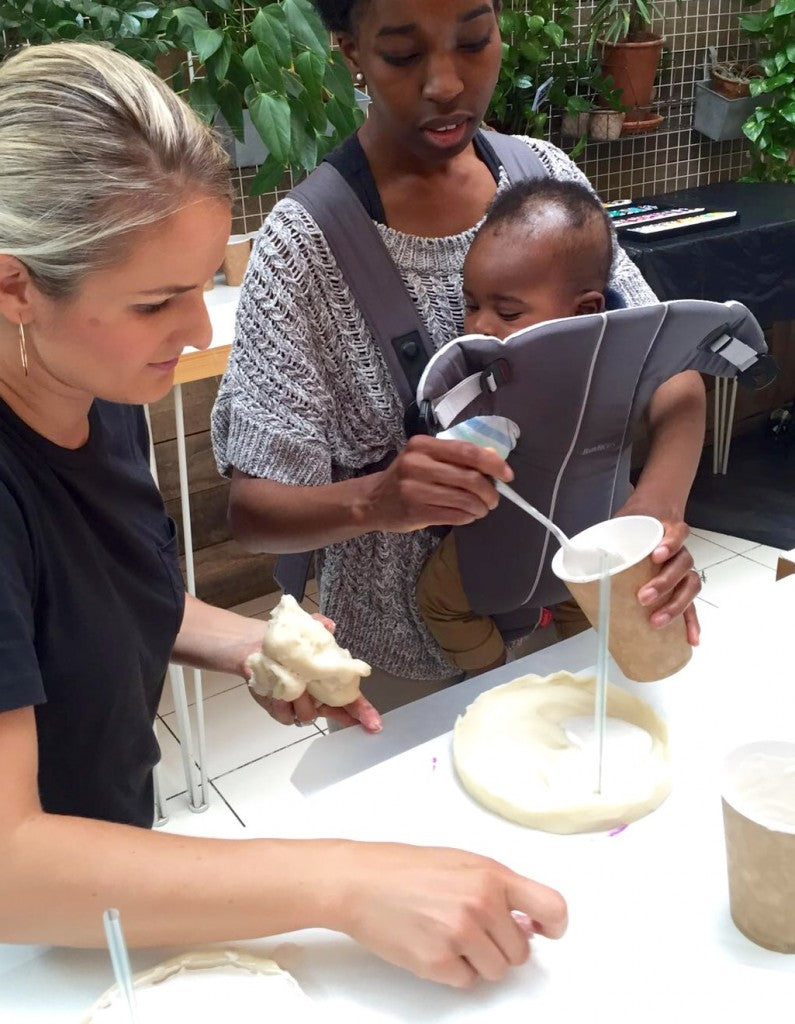Make your own 3D hand and foot casts
It’s been over 8 years since I’ve had any white flour, processed table salt or cheap vegetable oil in my pantry, but today I’ve reunited with these items once again!
Don’t worry, I haven’t gone back to eating them and I highly doubt we’ll see the day of me ever using the inedible ingredients in my food, but there may very well be a place for them in your life…
Today I’m sharing a recipe you might like to try for yourself… especially if you have little ones and especially if you’re stuck for Father’s Day gift ideas!
Below you will find all the instructions for creating your very own play dough! So fun. And more importantly, you will find instructions to creating a mould for your child’s 3D hand and foot casting- the best keepsake and gift ever! Plus you can keep making these for as long as you like and monitor your baby’s growth over the years. They will love to compare the size of their hands and feet also as they get older.


THE STEPS COME IN THESE 4 PARTS (+ SHOPPING LIST FOR EACH):
1. MAKE PLAY DOUGH (OR MISS THIS STEP IF USING BOUGHT PLAY DOH)
Table salt
White flour (or gluten free flour)
Vegetable oil
Cream of tartar (baking section of supermarket)
Saucepan, cup and spoon measuring tools, wooden spoon, stove top
2. CREATE A MOULD
Pliable surface (ie soft plastic chopping board or dehydrator teflex sheet)
6.5 inch/ 16.5 cm saucepan (or something else with a flat base)
3. SET PLASTER
Plaster of Paris (from Amazon or any art supplies store)
Cup and ml measuring tools
Bowl and spoon
Plastic straw
4. DECORATE
Paints, brushes
Ribbon

AND NOW HERE ARE ALL THE STEPS. IT’S LITERALLY SO EASY AND SERIOUSLY FUN! AS YOU CAN SEE, I’VE HELD A WORKSHOP FOR ALL MY ANTENATAL CLASS GIRLS AT TANYA’S CAFE AND THEY ALL HAD THEIR BABIES STRAPPED TO THEM FOR THE FULL DURATION OF THE PROJECT, SO WE KNOW FOR SURE 2 HOURS IS PLENTY FROM GETTING EVERYTHING READY TO HAVING A COMPLETED PIECE READY TO HANG, ALL WITH THE BABY TO TEND TO.
1. MAKE YOUR OWN PLAY DOUGH
Ingredients:
2 cups warm water
1 cup salt
2 cups white flour
1 tbsp vegetable oil
1.5 tbsp cream of tartar (2.5 packs from 6 pack box)
-All in saucepan over medium heat.
-Stir quickly till it mixes well to dough consistency (5-10 mins).
-The dough won’t be hot so you can take it out and kneed on a non stick surface.
-Transfer to an airtight container, where it will keep for months.
2. CREATE A MOULD
-Take 1/3 amount of dough.
-Flatten into a pancake with your hands.
-Place onto non stick AND pliable surface (must be pliable or you’ll struggle to remove it without cracking the cast plaster), press bottom of saucepan into it (apply lots of force) and fold dough around the edges to create a safe well.
-Remove the saucepan and fix any edges that need fixing.
-Place baby’s hands/feet/both where you’d like them in the circle and apply force all over to create a good dent.




3. SET PLASTER
1 cup plaster of Paris
110ml water
-Make sure everything is ready to go before stirring the plaster powder with water as it’ll start setting within 10 minutes. If you’re having a hole for the hanging ribbon- screw in a plastic straw into the dough mould at this stage.
-Pour 110ml water into a bowl, add powder (always add powder to water not the other way round) and stir immediately and very quickly, making sure to stir out any lumps or large bubbles.
-Pour plaster into the well, gently move the resting board from side to side to even out plaster surface and especially to fill out the hand print. Leave to set for 30+ minutes.
-If any plaster went out the sides when you poured it, simply wait for it to set slightly (but when it’s still damp) and shave off the uneven edges with a butter knife.
4. DECORATE
-There’s no added benefit to leaving plaster to set for hours unless your dough is extremely wet (shouldn’t be with above recipe), so 30-60 minutes should be more than enough. Remove the straw by twisting it out.
-Turn the entire mould with its pliable surface over and carefully peel the sheet away. Be gentle so the plaster doesn’t crack.
-Now gently peel off the dough. It will be quite sticky and if it doesn’t come away easily, take a small drier piece of dough and use it like a sticker to go over the whole cast and collect all the stray bits of wet dough. You want to make sure that all that remains is the set plaster.
-Leave to air dry for 5-10 minutes and apply your favourite colour in acrylic paint (take straight from tube without adding water). I recommend choosing 2 colours and using the darker as the base.
-Take the second lighter colour (if using), apply to your finger and run it along the protruding surface of the hands/feet. This way the dark colour appears through the ‘cracks’ outlining the 3D effect even better.
-Thread a ribbon through the hole. And voila!










